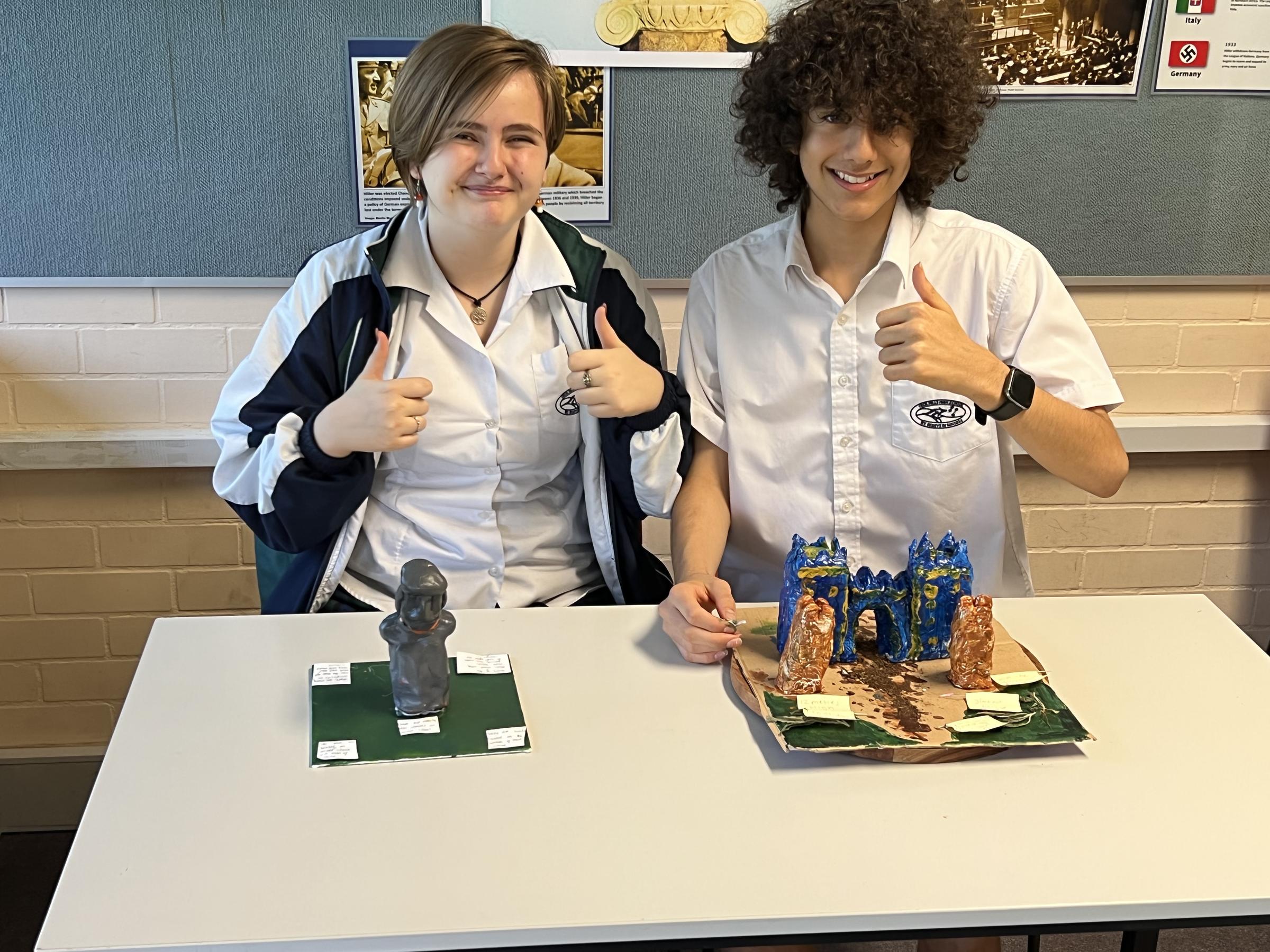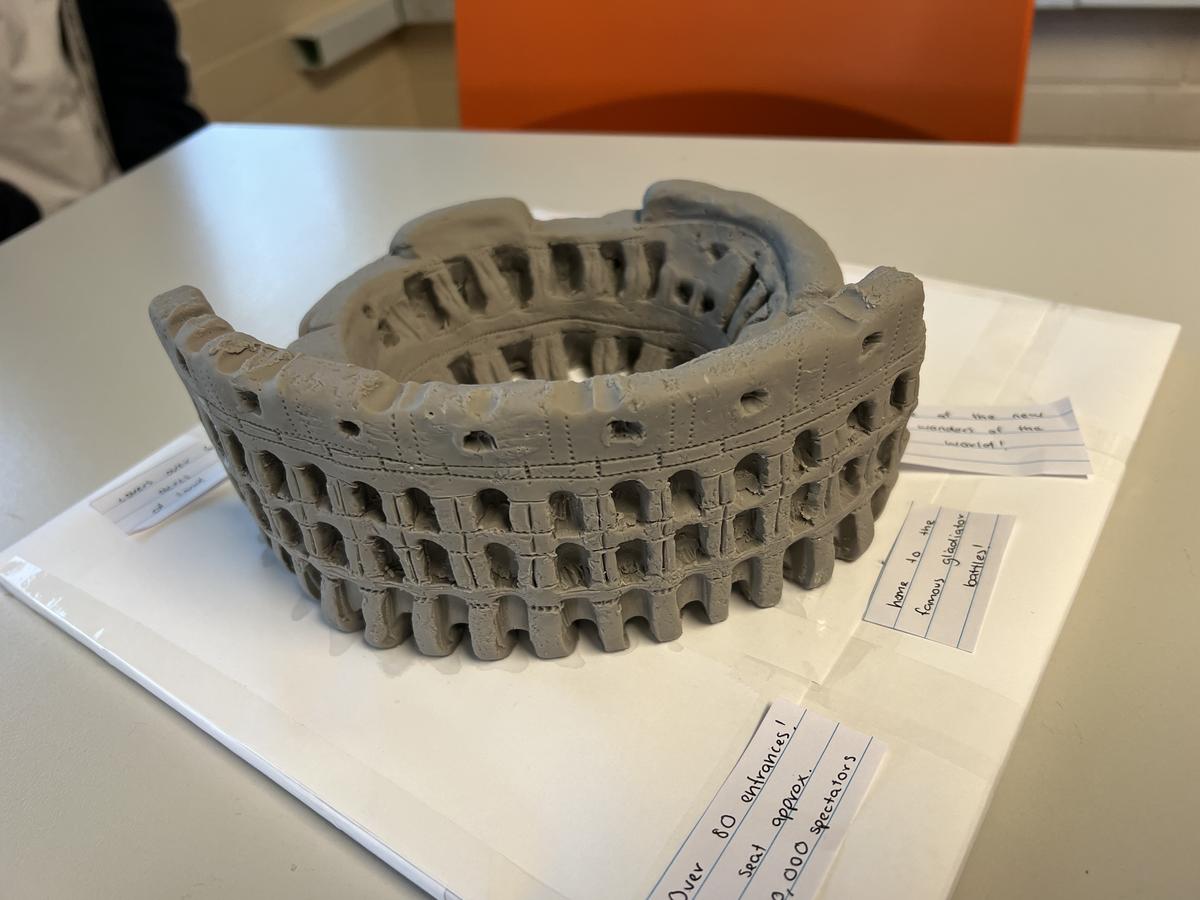Ancient, Medieval and Modern
Mija Dutina and Christian Varda - Year 10

Ancient, Medieval and Modern
Mija Dutina and Christian Varda - Year 10


Mr Cupic's Archaeology class has been working very hard this semester on their archaeological dioramas. Archaeology (History Elective) is a subject that gives students who love History a chance to explore the past in a deeper way. The focus of Archaeology is to explore the past with a project-based approach. Topics we have investigated so far this year include Ancient Archaeological sites and Ancient, Medieval and Modern Societies. Students were required to research a significant archaeological site and then create a physical diorama using materials of their choice. The quality of the work from Year 9 and Year 10 students was very impressive and students really displayed their enthusiasm for History.
Photo above shows Mia Dutina and Christian Varda with their archaeological masterpieces!
Mr M Cupic
Archaeology teacher
Isabel Sanchez, Year 10
Being given the opportunity to learn about the rich history of Ancient Rome was an experience I’d do all over again. The history behind one of the most famous archaeological sites was enough for me to want to reconstruct it. The building of the Colosseum was both strenuous and rewarding at the same time.
I had faced various challenges during the recreation process of the Colosseum due to the difficulty of my main resource. The clay I had used to construct it was extremely firm and took hours of gruelling work to even become malleable and on top of all that making sure the proportions were correct was another major factor. The biggest challenge I had by far was when It came time to bake it in the oven. After proper placement on a baking tray I had put it in the oven and set a timer according to the directions. I had only expected it to be there for about 30 minutes however, since it was so thick It ended up being in there for 3 hours. I spent those 3 hours in front of my oven, and at some point I had decided to turn my oven off and hope for the best.




Despite all of the tough hours I spent moulding the clay and using up all of my spare time to do this, the outcome was well worth it. This was one of the most rewarding assessments I’ve had the pleasure of doing and being able to witness the outcome was a great experience. Not only did I have the opportunity to do something fun for a school assessment but being able to learn more about Ancient Rome and its purpose was something I’d be willing to do again.
Emily Nikolic, Year 10


Studying about the Pyramids of Giza heavily encouraged me to redesign the archaeological site in real life, on a smaller scale. The most interesting fact to me, was the astronomical alignment of the pyramids with the stars, specifically The Big and Little Dipper constellations. Along with the perfect positioning of the pyramids in relation to the cardinal point, North, South, East and West.
There were various obstacles I struggled with when building The Pyramids of Giza, including when trying to make the basic shape of the pyramids with cardboard. There were also many resources that were hard to find, counting the sand and the pretend shrubs and vegetation. I do not regret choosing this historical site, as it is the oldest of the Seven Wonders of the World and is faultless.
Christian Varda, Year 10
This project took me about 3 days to construct and trust me, Building these Gates of Ishtar was definitely a difficult challenge. I built the Gates of Ishtar (also known as The Babylon Gates) which was outlined in the city of Babylon, and now known as Iraq. The Bablyon Gates was used as a main entrance to the famous commercial centre inside the city. They also host amazing festivals and celebrations during the new years period. I was faced with many difficulties as my building wouldn't mould as the clay was very difficult to handle. Another difficulty I went through was that the building was too heavy to carry on my cardboard surface so I had to transport it to a piece of wood I was lucky to find in my house. Despite the challenges, I am happy with how it turned out and I chose it as it's related to my culture and I found it beautiful, so I decided to recreate it.
Mija Dutina, Year 10
The legends of the Moai heads and the mysterious backstory to them truly inspired me to try and recreate these statues. There are said to be 1000 statues, each being around 12 meters and 82 tonnes. There are many conspiracies on how they've been moved around the island and how people in 1400 AD managed to build these massive statues.
Building this statue was more difficult than I thought it would be. Trying to replicate the distinct features of the nose and eyebrows proved to be difficult. I ran into a lot of problems when I struggled to stick the head to the body, the clay was too heavy to stick to the body normally. I tried to score the clay and stick it with water but that left the statue unbalanced. I then tried to use a hot glue which didn't stick to clay and in the end I used a mix of all strategies to stick the head to the body. Sticking the statue to the canvas was even more difficult. The clay statue was heavy and couldn't keep its balance. I ended up using a mix of hot glue and blue tack to stick the clay to the canvas.